The Jack Keil Wolf Lecture in Electrical and Systems Engineering
2024 Jack Keil Wolf Lecture
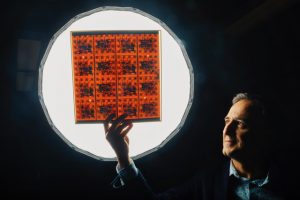 Friday, November 15, 2024
Friday, November 15, 2024
4pm, Krishna P. Singh Center for Nanotechnology Glandt Forum
Ali Hajimiri
Bren Professor of Electrical Engineering and Medical Engineering; Co-Director, Space-Based Solar Power Project,
Caltech
“Army of Ants: The Power of Working in Concert”
Ali Hajimiri
Prof. Ali Hajimiri received his B.S. degree in Electronics Engineering from the Sharif University of Technology, and M.S. and Ph.D. degrees in electrical engineering from the Stanford University. Before joining the Faculty of Caltech, he worked for Bell Laboratories, Sun Microsystems, and Signetics (Philips Semiconductor). In 1998, he joined the Faculty of the California Institute of Technology, Pasadena, where he is Bren Professor of Electrical Engineering and Medical Engineering, Director of Caltech Holistic Integrated Circuit Laboratory, and co-Director of the Space-based Solar Power Project. His research interests are high-speed and high-frequency electronics and photonics integrated circuits for applications in sensors, photonics, communication, wireless energy transfer, and biomedical devices.
He is a Fellow of National Academy of Inventors (NAI). Prof. Hajimiri was selected to the TR35 top innovator’s list. He is also a Fellow of IEEE and has served as a Distinguished Lecturer of the IEEE Solid-State and Microwave Societies. He won the Feynman Prize for Excellence in Teaching, Caltech’s most prestigious teaching honor, as well as Caltech’s Graduate Students Council Teaching and Mentoring award. He is also three-times winner of the Associated Students of Caltech (ASCIT) Undergraduate Excellence in Teaching Award. He was the Gold medal winner of the National Physics Competition and the Bronze Medal winner of the 21st International Physics Olympiad, Groningen, Netherlands. He was a co-recipient of the IEEE Journal of Solid-State Circuits Best Paper Award, the International Solid-State Circuits Conference (ISSCC) Jack Kilby Outstanding Paper Award, a co-recipient of RFIC best paper award, a two-time co-recipient of CICC best paper award, and a three-time winner of the IBM faculty partnership award as well as National Science Foundation CAREER award and Okawa Foundation award. He co-founded Axiom Microdevices Inc., whose fully-integrated CMOS PA has shipped around 400,000,000 units, and was acquired by Skyworks Inc.
He serves on the Technical Program Committee of the International Solid-State Circuits Conference (ISSCC) as the chair of the technology directions sub-committee, and has served as an Associate Editor of the IEEE Journal of Solid-State Circuits (JSSC), as an Associate Editor of IEEE Transactions on Circuits and Systems (TCAS): Part-II, a member of the Technical Program Committees of the International Conference on Computer Aided Design (ICCAD), Guest Editor of the IEEE Transactions on Microwave Theory and Techniques, and Guest Editorial Board of Transactions of Institute of Electronics, Information and Communication Engineers of Japan (IEICE).
Past Speakers in this Series
2022 Lecture: Tsu-Jae King Liu
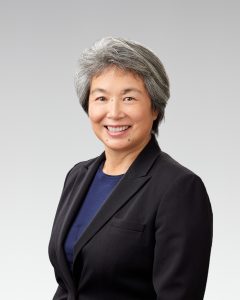 Wednesday, November 30, 2022
Wednesday, November 30, 2022
3pm, Krishna P. Singh Center for Nanotechnology Glandt Forum
Tsu-Jae King Liu
Dean and Roy W. Carlson Professor of Engineering,
University of California Berkeley
“Sustaining the Semiconductor Revolution: Challenges and Opportunities”
Speaker Biography:
Tsu-Jae King Liu earned her B.S., M.S. and Ph.D. degrees in electrical engineering at Stanford University in 1984, 1986 and 1994, respectively. From 1992 to 1996, she was member of research staff at the Xerox Palo Alto Research Center (PARC). In 1996, she joined the faculty of the Department of Electrical Engineering and Computer Sciences (EECS) at the University of California, Berkeley, where she is now Dean of the College of Engineering.
Liu is internationally known in academia and industry for her innovations in semiconductor devices and technology, and is highly regarded for her achievements as an instructor, mentor and administrator. She is a fellow of the Institute of Electrical and Electronics Engineers (IEEE), an elected member of the U.S. National Academy of Engineering, a fellow of the U.S. National Academy of Inventors, and Director of Intel Corporation and of Maxlinear, Inc. Her awards and honors include the Intel Outstanding Researcher in Nanotechnology Award, the IEEE Aldert van der Ziel Award for distinguished educational and research contributions to the field of electronic devices and materials, the IEEE Electron Devices Society Education Award, and the Defense Advanced Research Projects Agency (DARPA) Significant Technical Achievement Award for her role in the development of the FinFET, an advanced transistor design used in all high-end computer chips today.
2021 Lecture: Kurt Petersen
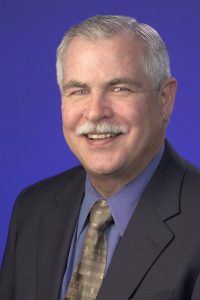 Tuesday, November 16, 2021
Tuesday, November 16, 2021
3pm, Krishna P. Singh Center for Nanotechnology Gandt Forum & Zoom
Kurt Petersen
Co-Chair,
The HardTech Group, Silicon Valley Band of Angels
“MEMS: the Transition from “Four-Letter-Word” to Trendy”
Speaker Biography:
Kurt Petersen received his BS degree cum laude in EE from UC Berkeley in 1970. In 1975, he received a PhD in EE from the Massachusetts Institute of Technology. Dr. Petersen established a micromachining research group at IBM from 1975 to 1982, during which he wrote the review paper “Silicon as a Mechanical Material,” published in the IEEE Proceedings (May 1982). This paper is the most frequently referenced work in the field of micromachining and micro-electro-mechanical systems (MEMS).
Since 1982, Dr. Petersen has co-founded six companies in MEMS technology, Transensory Devices Inc. in 1982, NovaSensor in 1985 (now owned by Amphenol), Cepheid in 1996 (acquired by Danaher in 2016), SiTime in 2004 (now listed as SITM on NASDAQ), Profusa in 2008 (still private), and Verreon in 2009 (acquired by Qualcomm).
In 2011, Dr. Petersen joined the Silicon Valley Band of Angels, where he now co-chairs the HardTech group. The Band is an angel investment group which mentors and invests in early stage, high-tech, start-up companies. Today, he spends most of his time helping and mentoring such companies.
Dr. Petersen has published over 100 papers, and has been granted over 35 patents in the field of MEMS. He was awarded the prestigious IEEE Medal of Honor in 2019 as well as the IEEE Simon Ramo Medal in 2001 for his contributions to MEMS. Dr. Petersen is a member of the National Academy of Engineering and is a Life Fellow of the IEEE in recognition of his contributions to “the commercialization of MEMS technology”.
2021 Lecture: Abbas El Gamal
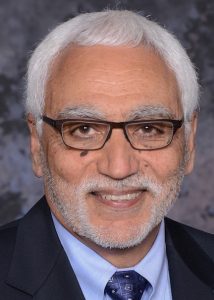 Monday, April 12, 2021
Monday, April 12, 2021
3pm, Zoom
Abbas El Gamal
Hitachi America Professor,
School of Engineering, Stanford University
“Coordination of Distributed Energy Resources (DERs)”
Speaker Biography:
Abbas El Gamal is the Hitachi America Professor in the School of Engineering and professor in the Department of Electrical Engineering at Stanford University. He received his B.Sc. Honors degree from Cairo University in 1972, and his M.S. in Statistics and Ph.D. in Electrical Engineering both from Stanford University in 1977 and 1978, respectively. From 1978 to 1980, he was an Assistant Professor of Electrical Engineering at USC. He has been on the faculty of the Department of Electrical Engineering at Stanford University since 1981. From 2003 to 2012, he was Director of the Information Systems Laboratory at Stanford University. From 2012-2017 he was Chair of the Department of Electrical Engineering at Stanford University. His research contributions have been in network information theory, FPGAs, digital imaging devices and systems, and smart grid modeling and control. He has authored or coauthored over 230 papers and holds 35 patents in these areas. He is co-author of the book Network Information Theory (Cambridge Press 2011). He is a member of the US National Academy of Engineering and a Fellow of the IEEE. He received several honors and awards for his research contributions, including the 2016 IEEE Richard Hamming Medal, the 2012 Claude E. Shannon Award, the 2014 Viterbi Lecture, the 2013 Shannon Memorial Lecture, the inaugural Padovani Lecture, and the 2004 INFOCOM Paper Award. He served on the Board of Governors of the Information Theory Society from 2009 to 2016 and was President in 2014. He co-founded and served on the board of directors and technical advisory boards of several Silicon Vally semiconductor, EDA, and biotech companies.
2019 Lecture: Shuji Nakamura
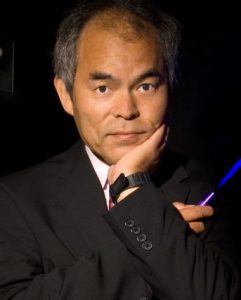 Shuji Nakamura
Shuji Nakamura
Professor of Materials and Electrical and Computer Engineering Research Director,
Solid State Lighting and Energy Center University of California Santa Barbara
“The Invention of High Efficient Blue LEDs and Future Solid State Lighting”
Glandt Forum | Krishna P. Singh Center for Nanotechnology
Speaker Biography:
Shuji Nakamura received a Ph.D. in Electrical Engineering from the University of Tokushima, Japan and worked at Nichia Chemical Industries from 1979 to 2000, after which he became a professor at UCSB. During his time at Nichia, he independently researched and ultimately demonstrated group-III nitride materials as possible blue light emitters.
Instrumental to his success was the development of a novel two-flow MOCVD, in 1990. This tool permitted him to obtain and explain p-type GaN while demonstrating the first high-quality InGaN layers, in 1992. This material was integrated into novel device structures, providing the bright violet, blue, or green LEDs and lasers that are known today. High-efficiency white light sources using these blue LEDs became available in 1996 and have since become the most efficient white light source known to man, changing the world forever. This achievement led him to be awarded the Nobel Prize in Physics in 2014.
Dr. Nakamura has received numerous awards for his work, including the Nishina Memorial Award (1996), the Materials Research Society Medal Award (1997), the Institute of Electrical and Electronics Engineers Jack A. Morton Award, the British Rank Prize (1998), the Benjamin Franklin Medal Award (2002), the Millennium Technology Prize (2006), the Czochralski Award (2007), the Prince of Asturias Award for Technical Scientific Research (2008), The Harvey Award (2009), and the Technology & Engineering Emmy Award (2012) awarded by The National Academy of Television Arts & Sciences (NATAS). He was elected a fellow of the U.S. National Academy of Engineering in 2003. He is the 2014 Nobel Laureate in Physics for the invention of efficient blue light-emitting diodes which has enabled bright and energy-saving white light sources. Dr. Nakamura received the 2014 Order of Culture Award in Japan. In 2015, he was inducted into the National Inventors Hall of Fame and received the 2015 Charles Stark Draper Prize for Engineering and the 2015 Global Energy Prize in Russia. He is also the recipient of The Mountbatten Medal Achievement Award in England (2017) and the 2018 Zayed Future Energy Prize Lifetime Achievement in the United Arab Emirates.
Since 2000, Dr. Nakamura has been a professor of Materials and Electrical and Computer Engineering at the University of California, Santa Barbara. He holds more than 200 U.S. patents and over 300 Japanese patents. He has published over 550 papers in his field. Dr. Nakamura is the Research Director of the Solid State Lighting and Energy Electronics Center and The Cree Chair in Solid State Lighting and Displays. In 2008, he co-founded Soraa, Inc., which operates vertically integrated fabrication facilities in California’s Silicon Valley and Santa Barbara.
2017 Lecture: Mark Horowitz
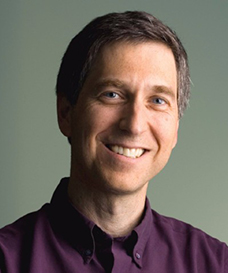 Mark Horowitz
Mark Horowitz
Yahoo Founder’s Professor of Electrical Engineering and Computer Science, Stanford University
Wednesday, November 1, 2017
“A Life of Breaking and Making: What Happens When You Mix a Driving Curiosity and Episodic Overconfidence”
Speaker Biography:
Mark Horowitz received B.S. and M.S. degrees in Electrical Engineering from MIT in 1978, and a Ph.D. from Stanford in 1984. He has since been a professor at Stanford, working in the area of digital integrated circuit design. During his tenure, he has led a number of processor designs, including: MIPS-X, one of the first processors to include an on-chip instruction cache; Torch, a statically scheduled, superscalar processor; Flash, a flexible DSM machine; and Smash, a reconfigurable polymorphic manycore processor. He has also worked in a number of other chip design areas, including high-speed memory design, high-bandwidth interfaces, and fast floating point. In 1990 he took leave from Stanford to help start Rambus Inc., a company designing high-bandwidth memory interface technology.
2016 Lecture: Thomas Kailath
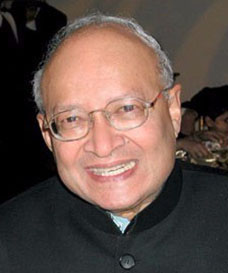 Thomas Kailath
Thomas Kailath
Hitachi America Professor of Engineering, Emeritus, Stanford University
Wednesday, October 20, 2016
“The Process of Making Breakthroughs in Engineering”
Speaker Biography:
Thomas Kailath received a B.E. in Telecommunications in 1956 from the College of Engineering, Pune, India, and both S.M. and Sc.D. degrees in electrical engineering from the Massachusetts Institute of Technology in 1959 and 1961, respectively. He then worked at the Jet Propulsion Labs in Pasadena, CA, before being appointed to Stanford University as an Associate Professor of Electrical Engineering in 1963. Kailath was promoted to full Professor in 1968, and was later appointed as the first holder of the Hitachi America Professorship in Engineering in1988. He assumed emeritus status in 2001, but remains active with his research and writing activities. He also held short-term appointments at several institutions around the world, including UC Berkeley, the Indian Statistical Institute, Bell Labs, the Indian Institute of Science, Cambridge University, K.U. Leuven, T.U. Delft, Weizmann Institute, Imperial College, MIT, UCLA, and, T.U. Munich.
Kailath’s research and teaching activities have spanned several fields of engineering and mathematics, including information theory, communications, linear systems, estimation and control, signal processing, semiconductor manufacturing, probability and statistics, and matrix and operator theory. He also co-founded and served as a director of several high-technology companies. Throughout his career, Kailath mentored an outstanding array of over 100 doctoral and postdoctoral scholars. Their joint efforts have led to over 300 journal papers, a dozen patents and several books and monographs, including the major textbooks Linear Systems (1980) and Linear Estimation (2000).
Kailath received the IEEE Medal of Honor in 2007 for “exceptional contributions to the development of powerful algorithms for communications, control, computing and signal processing.” Among other major honors are the Shannon Award of the IEEE Information Theory Society; the IEEE Education Medal and the IEEE Signal Processing Medal; the 2009 BBVA Foundation Prize for Information and Communication Technologies; the Padma Bhushan, India’s third highest civilian award; election to the U.S. National Academy of Engineering, the U.S. National Academy of Sciences, and the American Academy of Arts and Sciences; foreign membership of the Royal Society of London, the Royal Spanish Academy of Engineering, the Indian National Academy of Engineering, the Indian National Science Academy, the Indian Academy of Sciences, and The World Academy of Sciences (TWAS).
In November 2014, he received a U.S. National Medal of Science from President Obama “for transformative contributions to the fields of information and system science, for distinctive and sustained mentoring of young scholars, and for translation of scientific ideas into entrepreneurial ventures that have had a significant impact on industry.”
2015 Lecture: Mildred Dresselhaus
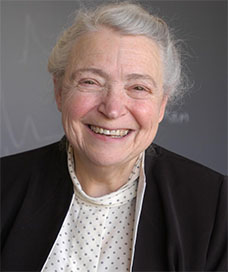 Mildred Dresselhaus
Mildred Dresselhaus
Professor of Physics and Professor of Electrical Engineering, Emerita
Massachusetts Institute of Technology
Wednesday, November 3, 2015
“The Oncoming Challenge in Engineering Research and Education”
Speaker Biography:
Mildred Dresselhaus is an Institute Professor at MIT in the departments of Electrical Engineering and Physics. Recent research activities in the Dresselhaus group that have attracted wide attention are in the areas of carbon nanotubes, graphene, and other nanocarbon materials, as well as low-dimensional thermoelectricity. She is a member of the National Academy of Sciences, the National Academy of Engineering, and has served as Director of the U.S. Department of Energy Office of Science, President of the American Physical Society, Treasurer of the National Academy of Sciences, President of the American Association for the Advancement of Science, chair of the U.S. National Academy Decadal Study of Condensed Matter and Materials Physics, and on many advisory committees and councils. Dr. Dresselhaus has received numerous awards, including the U.S. National Medal of Science, the Fermi Award, the Kavli Prize, the Presidential Medal of Freedom, and 31 honorary doctorates worldwide. She is the co-author of eight books and about 1700 papers primarily on carbon science, and is particularly well known for her work on carbon nanomaterials and other nanostructural systems based on layered materials, like graphene, and more recently beyond graphene, like transition metal dichalcogenides and phosphorene. More generally, her research over the years has covered a wide range of problems in condensed matter and materials physics.
2014 Lecture: Alberto Sangiovanni-Vincentelli
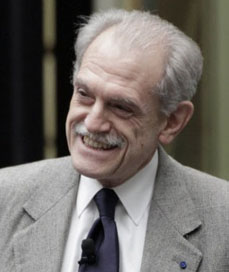 Alberto Sangiovanni-Vincentelli
Alberto Sangiovanni-Vincentelli
Buttner Chair of Electrical Engineering and Computer Sciences
University of California, Berkeley
Wednesday, November 5, 2014
“My Journey from Chips to Swarm Systems”
Speaker Biography:
Alberto Sangiovanni-Vincentelli holds the Buttner Chair of Electrical Engineering and Computer Sciences, University of California, Berkeley. He was a co-founder of Cadence and Synopsys, the two leading companies in Electronic Design Automation. He is a member of the Board of Directors of Cadence, Sonics, Expert Systems, and of KPIT Cummins. He was a member of the HP Strategic Technology Advisory Board, of the Science and Technology Advisory Board of GM, and is a member of the Technology Advisory Council of UTC. He consulted for many companies including Bell Labs, IBM, Intel, UTC, Magneti Marelli, Pirelli, BMW, Daimler-Benz, Fujitsu, Kawasaki Steel, ST, and Hitachi. He is a member of the High-Level Group, of the Steering Committee, of the Governing Board and of the Public Authorities Board of the EU Artemis Joint Technology Initiative. He is member of the Scientific Council of the Italian National Science Foundation (CNR) and of the Executive Committee of the Italian Institute of Technology. He is Chairperson of the CNGR, a seven person committee established by the Ministry of Education, Scientific Research and University of the Italian Government. He is the President of the Strategic Committee of the Italian Strategic Fund (a 7Billion Private Equity Fund).
He received the Distinguished Teaching Award of the University of California and the IEEE Graduate Teaching Award for “inspirational teaching of graduate students”. He was the recipient of the Aristotle Award of the Semiconductor Research Corporation. He received numerous research awards including the Guillemin-Cauer Award (1982-1983) and the Darlington Award (1987-1988) of the IEEE for the best paper bridging theory and applications.
He received the Kaufman Award for “pioneering contributions to EDA”, the IEEE/RSE Maxwell Medal “for groundbreaking contributions that have had an exceptional impact on the development of electronics and electrical engineering or related fields”, the first ACM/IEEE A. Richard Newton Technical Impact Award. He holds an honorary Doctorate by the University of Aalborg, Denmark.and one by KTH, Sweden.
He is an author of over 800 papers, 17 books and 2 patents.
Dr. Sangiovanni-Vincentelli has been an IEEE Fellow since 1982 and a Member of the NAE since 1998.
2013 Lecture: Andrew Viterbi
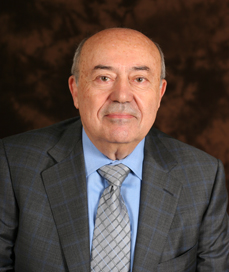 Andrew Viterbi
Andrew Viterbi
President, Viterbi Group
Professor Emeritus, UCSD
Tuesday, October 22, 2013
“Jack Wolf’s Half Century of Contributions to the Digital Revolution”
Speaker Biography:
Dr. Andrew Viterbi is a co-founder and retired Vice Chairman and Chief Technical Officer of Qualcomm Incorporated. He spent equal portions of his career in industry and in academia as Professor in the Schools of Engineering and Applied Science, first at UCLA and then at UCSD, at which he is now Professor Emeritus. He is currently president of the Viterbi Group, a technical advisory and investment company. He also serves as a Presidential Chair Visiting Professor at the University of Southern California and a distinguished Visiting Professor at the Technion-Israel Institute of Technology.
His principal research contribution, the Viterbi Algorithm, is used in most digital mobile phones and digital satellite receivers, as well as in such diverse fields as magnetic recording, voice recognition and DNA sequence analysis. More recently, he concentrated his efforts on establishing CDMA as the multiple access technology of choice for cellular telephony and wireless data communication.
Dr. Viterbi has received numerous honors both in the U.S. and internationally. Among these are seven honorary doctorates from universities in Canada, Cyprus, Israel, Italy and the U.S., the Marconi International Fellowship Award, the IEEE Alexander Graham Bell, Claude Shannon and James Clerk Maxwell Awards, the NEC C&C Award, the Eduard Rhein Foundation Award, the Christopher Columbus Medal, the Franklin Medal, the Robert Noyes Semiconductor Industry Award, the Millennium Laureate Award and the IEEE’s highest award, the Medal of Honor. He is a member of the National Academy of Engineering and the National Academy of Sciences and is a Fellow of the American Academy of Arts and Sciences. He has received an honorary title from the President of Italy and the National Medal of Science from the President of the United States.
Viterbi has served on boards and committees of numerous non-profit institutions, including the University of Southern California, MIT Visiting Committees, Mathematical Sciences Research Institute and the Presidential Information Technology Advisory Committee. He is past chairman of the Computer and Information Sciences Section of the U.S. National Academy of Sciences.
In Honor of Jack Keil Wolf
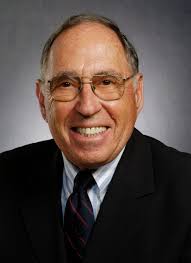 Jack Keil Wolf, an information theorist whose pivotal contributions to digital communication and data storage technology helped shape our networked world, was a 1956 graduate in electrical engineering from the University of Pennsylvania. Dr. Wolf’s enduring connection with the University began with his father, Joseph, a 1916 graduate of Penn Dental Medicine. Jack’s daughter, Sarah, EE’86, W’86, and two of his grandchildren have continued the Penn Engineering tradition.
Jack Keil Wolf, an information theorist whose pivotal contributions to digital communication and data storage technology helped shape our networked world, was a 1956 graduate in electrical engineering from the University of Pennsylvania. Dr. Wolf’s enduring connection with the University began with his father, Joseph, a 1916 graduate of Penn Dental Medicine. Jack’s daughter, Sarah, EE’86, W’86, and two of his grandchildren have continued the Penn Engineering tradition.
After graduating from Penn Engineering, Dr. Wolf received his MSE, MA, and PhD degrees from Princeton University in 1957, 1958, and 1960, respectively. He served in the Air Force and taught at New York University, the Polytechnic Institute of Brooklyn and the University of Massachusetts at Amherst before moving to San Diego, where he joined the faculty of the University of California’s Jacobs School of Engineering in 1984. He held the Stephen O. Rice Professorship of Electrical and Computer Engineering at the Center for Magnetic Recording Research, where he led the Signal Processing Group, nicknamed the “Wolf Pack.”
Described by the Institute of Electrical and Electronics Engineers as “one of the most productive cross-fertilizers in engineering research,” Dr. Wolf is perhaps known for his work that produced the Slepian-Wolf Theorem. The theorem proved that two separate streams of correlated data can be sent independently at the same time and then combined at the final destination.
The recipient of many honors and awards throughout his distinguished career, Dr. Wolf was inducted into the National Academy of Engineering in 1993. In 2010, he was elected to the National Academy of Sciences and, along with Irwin Jacobs, received the 2011 Marconi Society Prize for his “lasting scientific contributions to human progress in the field of information technology.”
Dr. Wolf died in May of 2011.
